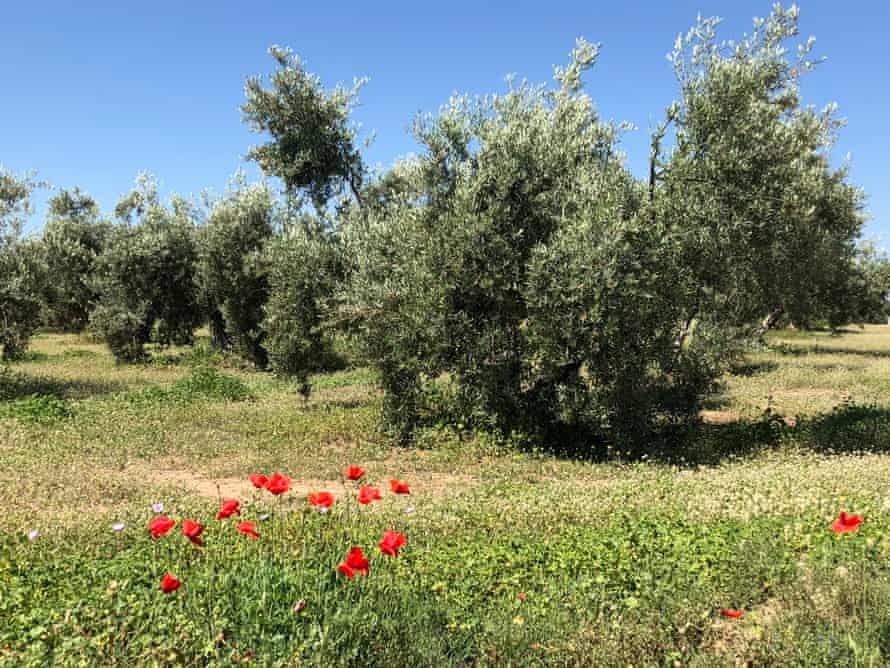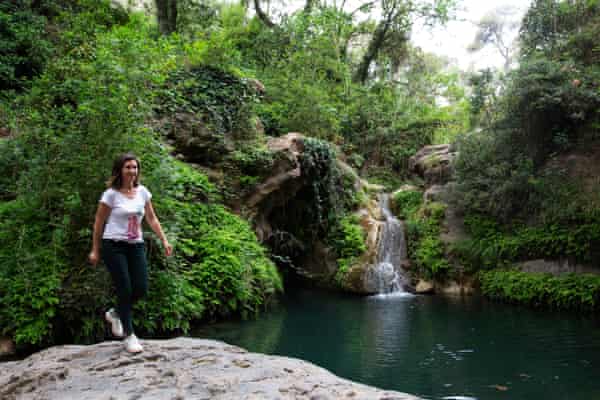By Stephen Burgen in Vilafranca del Penedès Aug 10th, 2021
They call it the sea of olives, 70 million olive trees that stretch to the horizon in every direction in the province of Jaén in southern Spain. It’s a spectacular landscape and yet, olives aside, the land is virtually dead, with scarcely a flower, bird or butterfly to be seen.
All this could be about to change following the remarkable success of a project that is raising new life from the dust of Andalucía.
In 2016, with financial support from the EU’s Life programme, 20 olive farms in the region were selected to adopt a regenerative agriculture model, allowing grass and wild flowers to flourish between the trees. Various local species were planted, nest boxes installed, and ponds created to encourage insect and bird life.
In the world’s largest study on olive grove biodiversity, researchers from the University of Jaén and the higher council for scientific research (CSIC), partners in the Olivares Vivos project, found that in three years, the bee population in the regenerative olive groves increased by 47%, birdlife by 10% and woody shrubs by 172%, compared with 20 control groves. As rabbits thrived on the grass, birds of prey have reappeared.
It was also discovered that herbicides were killing those insects that eat the larvae of the olive fruit fly (Bactrocera oleae), one of the crop’s principal pests.
“What we are doing is returning to more traditional ways,” says Paco Montabes, who farms 650 hectares (1,600 acres) of picual olives in Jaén’s Sierra Mágina. “Not ploughing between the trees makes for better water retention, less erosion and run-offs after heavy rain. The vegetal covering makes the ground sponge-like and absorbs the rain.”

Both environmental and economic concerns, says José Eugenio Gutiérrez, of the conservation organisation SEO Birdlife, the project coordinator. Growers were worried about soil erosion and the lack of biodiversity, but were also suffering financially as a global glut of olive oil pushed prices to below the cost of production. Often the only people making a profit were at the bottling plant and the retailers.
The Olivares Vivos approach is a win-win strategy: biodiversity thrives while the olive oil is certified as having been produced in conditions that increase biodiversity, rather than being certified simply as “ecological”, giving it added value.
“You can grow under plastic and it’s still classed as ecological,” says Gutiérrez. “We needed to create labelling that guarantees the product is produced through regenerative agriculture.”
As growers save money on herbicides and pesticides and can sell their oil at a premium, the scheme has not gone unnoticed in the region. Gutiérrez says that more than 600 growers have expressed an interest in adopting the regenerative model.
Our objective is to stop ploughing. We have to give life back to the soil
Miguel Torres
The idea is one that has already taken off in the wine business. Some smaller vineyards have adopted regenerative practices, but now major winemakers are signing up, too. In the wine-growing region of Penedès, 450 miles (750km) north of Jaén, Torres, Spain’s biggest winemaker, is embracing the regenerative approach as it seeks ways to reduce its carbon footprint.
“Although we were certified as organic viticulture in most of our vineyards, there was a feeling that we weren’t doing enough,” says Miguel Torres, the fifth generation at the head of the winery.

Traditionally, the earth is ploughed between the vines to get rid of weeds and open the ground to the rain. However, as well as contributing to erosion, this leads to a lack of biodiversity and poor soil, which then needs nutrients to be replenished artificially.
“The organic viticulture rules don’t even mention carbon footprint, so you can use a tractor as much as you want. We thought, ‘we have to reduce our emissions but we also have to capture CO2,’” says Torres.

The producer has reduced its carbon footprint by 34% a bottle and is aiming for 60%, mostly through energy-efficiency measures introduced during the winemaking process.
“Our objective is to stop ploughing,” he says. “When you plough you bring organic material to the surface and then it oxidises, so everything you had stored goes into the atmosphere. What we try to do is imitate nature as much as possible, which means we have to give life back to the soil.”
While tree planting is at the forefront of the fight against the climate crisis, if the world’s 7.4m hectares of vineyards adopted the regenerative model the impact would be huge, Torres says.

Nearby, at the Parés Baltà winery, the oenologist Marta Casas is going further. She believes regenerative viticulture is a major step towards the more holistic biodynamic approach, which views animals, soil and produce as part of a single, interrelated system.

“The more you give to the soil, the more it gives back in return,” she says, standing beside an open-air oven from the 6th century BC that inspired her to make a wine in earthenware pots.
Casas’ passion for her work is matched by her curiosity, which has led her to pursue many ancient ideas. For example, she discovered that by using a solution of the plant horsetail it is possible to significantly reduce the amount of copper sulphate sprayed on vines to treat mildew.
If regenerative agriculture seems more like common sense than a revolutionary idea, for vine and olive growers alike it marks a rejection of two farming shibboleths: plough the earth and kill the competition.
Montabes says they have had to break out of the mindset that regards any plant other than the desired crop as a competitor, a weed, or mala hierba in Spanish.
“Now we know better,” he says. “Las malas hierbas son buenas.”
Find more age of extinction coverage here, and follow biodiversity reporters Phoebe Weston and Patrick Greenfield on Twitter for all the latest news and features
To read the article in The Guardian click here.

